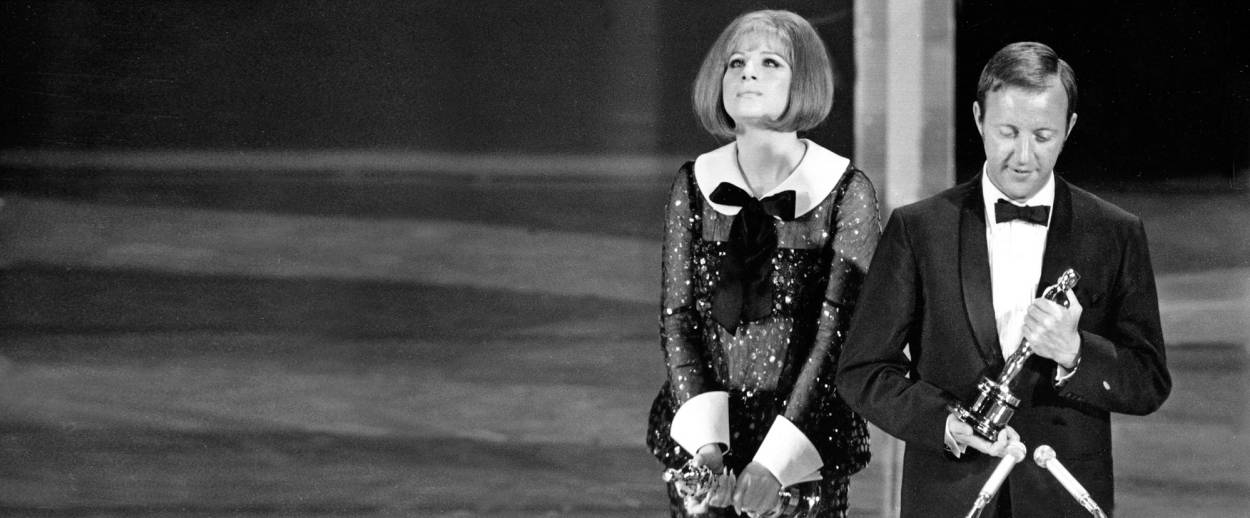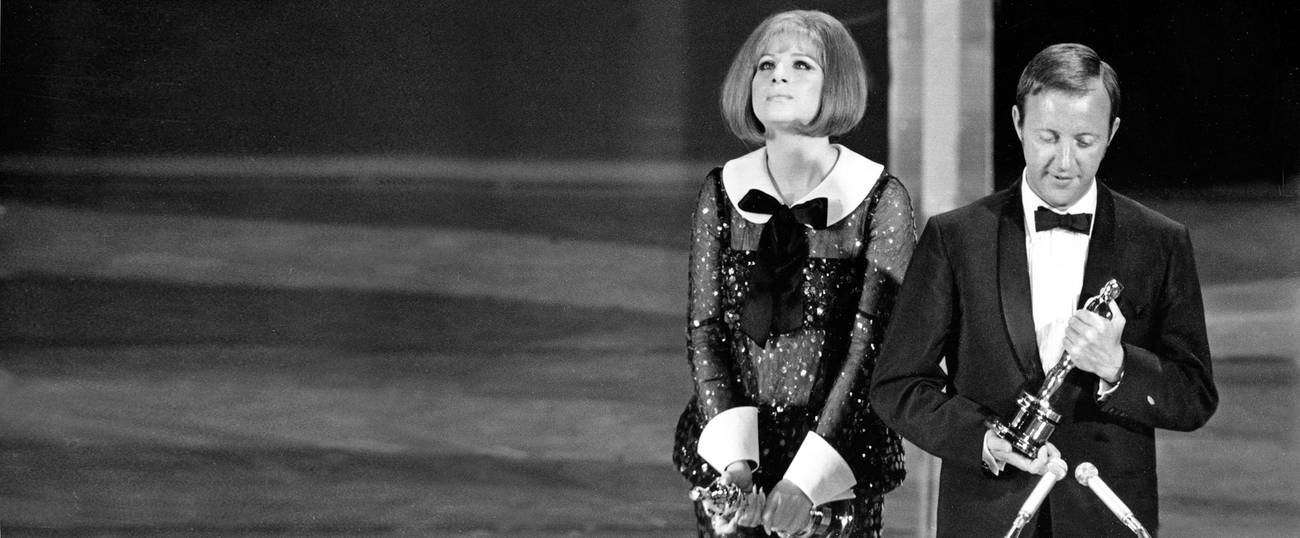Remembering Arnold Scaasi, Jewish Designer to the Stars
Known for his tasteful gaudiness—and Barbra Streisand’s memorable 1969 Oscars outfit—the Montreal-born fashion icon believed you never had to tone down to move up




Arnold Scaasi, the legendary fashion designer whose couture creations graced the backs of the greatest Hollywood stars and ladies who lunched (and for all I know, continue to), died last week at the age of 85. Born to a Jewish family in Montreal (his original last name was Isaacs, the spelling of which he ingeniously reversed in order to achieve a certain Continental flair), Scaasi was known above all for his ornate, highly embellished evening gowns and ensembles—perhaps the most famous of his creations was the sheer Peter Pan-collared pantsuit Barbra Streisand wore to the 1969 Oscars, in which she stumbled on her way to the podium (take that, Jennifer Lawrence, you copycat) to collect her Best Actress Oscar for Funny Girl. You remember it—it has all those black sequined balls hanging off of it and was the kind of drop dead chic that would land her on all the worst-dressed lists in this age of nude mermaid fishtail gowns but will be remembered until the last cockroach eats the last blade of grass on a desiccated Planet Earth.
The tasteful gaudiness of Scaasi’s designs meant that his own star ascended during the flashier eras of fashion history—the late 1960s, the mid 1980s—and dimmed slightly (although never completely) when the country was in a more minimalistic mood. The austere slip dresses and stark menswear looks of the 1990s, for example, were anathema to him; embroidered peplums and tiers of chiffon ruffles were more his speed. He was also, rare among designers, known for being more than willing to adapt a gown to its wearer’s specifications—a sleeve there, a generous swoop of ruching there to cover up whatever problem spots one of his ladies might wish to conceal.
It was precisely this focus on making the wearer feel beautiful rather than forcing her to feel worthy of the clothes (in the manner of many of the more punishing European designers, who act as though deigning to make anything larger than a size 8 would be akin to churning out the kind of muumuu housecoats they sell for $4.99 at Walmart; Karl Lagerfeld, ahem, ahem) that made Scaasi so special—and so endearingly haimish. If the North American Jewish Experience can be expressed in fashion, it’s a story of aspiration, of becoming something you’re not by dressing like it. Scaasi, quite simply, refused to play that game. Not for him the ersatz old-money discretion of Ralph Lauren, with his artfully faded florals and oars on the walls, or the pristine Aryan androids of classic Calvin Klein. Scaasi wasn’t afraid of bright colors, big hair, or less than perfect bodies—although let’s face it, in fashion a perfect figure is always welcome. Even when fashions moved on, and the number of women who genuinely needed a complete evening wardrobe plummeted (there were only so many Gayfryd Steinbergs and Nan Kempners in the world; and the ones who are left just wear J. Crew now like anybody else) he was always there, always happy to help the women whose natural sense of taste might not be so tasteful. In Scaasi’s world, you never had to tone down in order to move up. What more can you ask of a designer, than to give you exactly what you want? If it had only been Barbra’s Oscars pantsuit, it would have been enough.
***
Like this article? Sign up for our Daily Digest to get Tablet Magazine’s new content in your inbox each morning.
Rachel Shukert, a Tablet Magazine columnist on pop culture, is the author of the memoirs Have You No Shame? and Everything Is Going To Be Great. Starstruck, the first in a series of three novels, is new from Random House. Her Twitter feed is @rachelshukert.
Rachel Shukert is the author of the memoirs Have You No Shame? and Everything Is Going To Be Great,and the novel Starstruck. She is the creator of the Netflix show The Baby-Sitters Club, and a writer on such series as GLOW and Supergirl. Her Twitter feed is @rachelshukert.